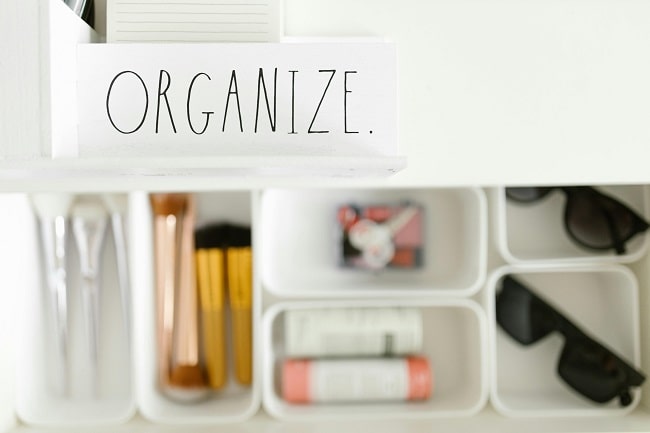Decluttering can feel like a liberating experience, but sometimes we find ourselves in declutter limbo—halfway between a clean, organized space and a mess that seems endless. Declutter limbo is that frustrating place where you’ve started decluttering but feel unable to make progress or see visible results. It’s as if the clutter clings to you, making it hard to move forward. If you’re stuck in this limbo, know that you’re not alone—and there are strategies to finally get unstuck, breathe easier, and reclaim control over your home.
1. Recognize and Overcome Declutter Paralysis
One of the main reasons people get stuck in declutter limbo is decision fatigue, also known as declutter paralysis. This is a common mental roadblock where the overwhelming number of choices causes you to freeze.
How to Conquer Declutter Paralysis
- Start with the Easy Stuff: Begin by decluttering items that are trash or have little value, like broken items or expired goods. Starting small builds momentum without the pressure of hard decisions.
- Set a Timer: Give yourself a 10-15 minute timer for each area. Focusing on a specific timeframe helps you make quick decisions without overthinking.
- Create a Declutter Checklist: Break down tasks by specific areas (like the pantry, closet, or junk drawer) and check off each one as you go. A checklist keeps you focused and provides a visual sense of accomplishment.
By tackling the easiest items first, you begin to build confidence, which helps reduce the pressure of those more challenging decisions later on.
2. Set Clear Goals for Your Decluttering Journey
If you’re feeling stuck, take a step back and redefine your decluttering goals. Without clear goals, decluttering can feel like an endless task. Setting a specific purpose for each room can provide motivation and direction.
Goal-Setting Tips for Decluttering
- Visualize the Outcome: Picture how you want each room to look and feel. A calming bedroom, an organized kitchen, or a clear home office—having a vision can make it easier to decide what stays and what goes.
- Identify Key Benefits: Remind yourself of the practical and emotional benefits of a clutter-free home, such as reduced stress, more space, and improved focus.
- Set Mini Milestones: Instead of thinking about the entire home, set milestones, like completing one drawer, shelf, or closet. Achieving these small goals builds momentum and keeps you motivated.
When you have a clear idea of your goal, the decluttering process becomes more purposeful, which can help prevent you from feeling overwhelmed.
3. Embrace the “One-Box Rule”
The One-Box Rule is a helpful tool when you’re uncertain about whether to keep or let go of items. With this method, keep a single box (or bin) designated for items you’re unsure about. Instead of holding up the entire decluttering process to debate each item, place it in the “maybe” box to decide on later.
How the One-Box Rule Helps
- Simplifies Decision-Making: It allows you to make quicker decisions without getting bogged down in uncertainty.
- Gives You Time to Reflect: Items in the box can be revisited after a week or a month. If you haven’t needed or thought about them, it may be a sign they’re ready to go.
- Limits Overthinking: Having a designated space for “maybe” items prevents them from piling up and keeps your decluttering process moving forward.
The One-Box Rule helps you sidestep clutter paralysis by simplifying choices and creating a system for indecision.
4. The “10-Minute Reset” to Tackle Declutter Limbo
If the thought of decluttering still feels overwhelming, try incorporating a 10-minute reset into your daily routine. This simple practice involves dedicating just 10 minutes each day to tidying up or organizing one small area.
How to Implement the 10-Minute Reset
- Pick a Specific Spot: Focus on a small, manageable area, like a drawer, a shelf, or your desk. Tackling a small space prevents burnout and keeps you from feeling overwhelmed.
- Set a Timer: Stick to the 10-minute timeframe to keep the task-focused and achievable.
- Make It a Daily Habit: By decluttering a little every day, you create consistency, and your home gradually becomes tidier over time.
This approach allows you to declutter gradually without dedicating hours at a time, making it easier to stay consistent and avoid declutter fatigue.
5. Use the Power of Decluttering Categories
One of the most effective ways to declutter is by sorting items into specific categories rather than tackling an entire room. This approach breaks down the task and minimizes the mental load of decision-making.
How to Use Decluttering Categories
- Identify Key Categories: Common categories include books, clothes, kitchen items, paperwork, and decor. Focus on one category at a time for simplicity.
- Set Rules for Each Category: Create criteria to help you decide what to keep or let go of, like keeping only clothes that fit or books you’ll read again.
- Declutter by Type, Not Location: Instead of decluttering multiple categories in one room, tackle a single type (like shoes) across the house. This gives you a clear picture of how much you own and prevents duplicate items.
Decluttering by category provides focus, and it becomes easier to make consistent decisions, reducing the chances of getting stuck in limbo.
6. Practice Mindfulness to Reduce Sentimental Clutter
Sentimental items are often a significant obstacle in the decluttering process, leaving many people feeling emotionally tied and unable to let go. Practicing mindfulness can help you approach sentimental clutter with a fresh perspective.
Mindful Decluttering Techniques
- Acknowledge and Honor Each Item: Hold each sentimental item and take a moment to reflect on its meaning. Acknowledge its value and thank it for the role it played in your life, then decide if it’s time to let go.
- Take Photos as Reminders: For items with sentimental value that don’t serve a functional purpose, consider taking photos to preserve memories. This way, you can keep the memory without the physical clutter.
- Set Limits: For especially sentimental categories like family memorabilia, set a limit on how many items you’ll keep. This ensures that only the most meaningful pieces remain.
By approaching sentimental items mindfully, you can feel more empowered to let go, reducing emotional attachment while preserving cherished memories.
7. Establish a “Home” for Every Item
If you find yourself re-cluttering spaces repeatedly, it might be because each item doesn’t have a designated spot. Giving every item a “home” helps prevent clutter buildup and allows for easier organization.
Tips for Assigning a “Home” to Items
- Group Similar Items Together: Store like items together in specific locations (e.g., all kitchen utensils in one drawer). This keeps things organized and easy to find.
- Create Zones in Each Room: Designate zones within each room based on activity or purpose. For instance, set aside a drawer for work supplies in your home office.
- Regularly Return Items to Their Homes: Each time you finish using an item, make it a habit to put it back in its designated place.
When everything has a designated spot, it’s easier to keep clutter under control and maintain a clean, organized space.
8. Implement a Decluttering Maintenance Routine
Once you’ve broken free from declutter limbo, create a simple maintenance routine to prevent future clutter. A maintenance routine can help you avoid falling back into limbo by keeping your space organized over the long term.
Maintenance Routine Tips
- Weekly Declutter Session: Dedicate 15-20 minutes each week to tidy up or declutter high-traffic areas, like countertops and entryways.
- Monthly Check-In: Each month, review and declutter areas that tend to accumulate clutter, such as closets and junk drawers.
- One-In, One-Out Rule: Every time you bring in a new item, make it a habit to remove an old item. This keeps your possessions in check and prevents new clutter from accumulating.
Having a routine in place makes decluttering easier and keeps your home clutter-free long after your initial decluttering efforts.
Conclusion: Breaking Free from Declutter Limbo for Good
Declutter limbo can feel discouraging, but with a structured approach, you can break free and create a home that’s both calm and organized. By focusing on small areas, setting clear goals, and using strategies like the One-Box Rule and mindfulness, you’ll move past mental roadblocks and overcome decision fatigue. Once you’ve achieved a clutter-free space, implementing a maintenance routine will help you keep your home organized and prevent clutter from creeping back in.
Decluttering isn’t just about creating a tidy space—it’s about cultivating a peaceful environment that allows you to breathe easily and enjoy your surroundings. With each item you let go of, you’re one step closer to living a simpler, more intentional life. So, take a deep breath, get started with one drawer or shelf, and watch as declutter limbo becomes a thing of the past.

